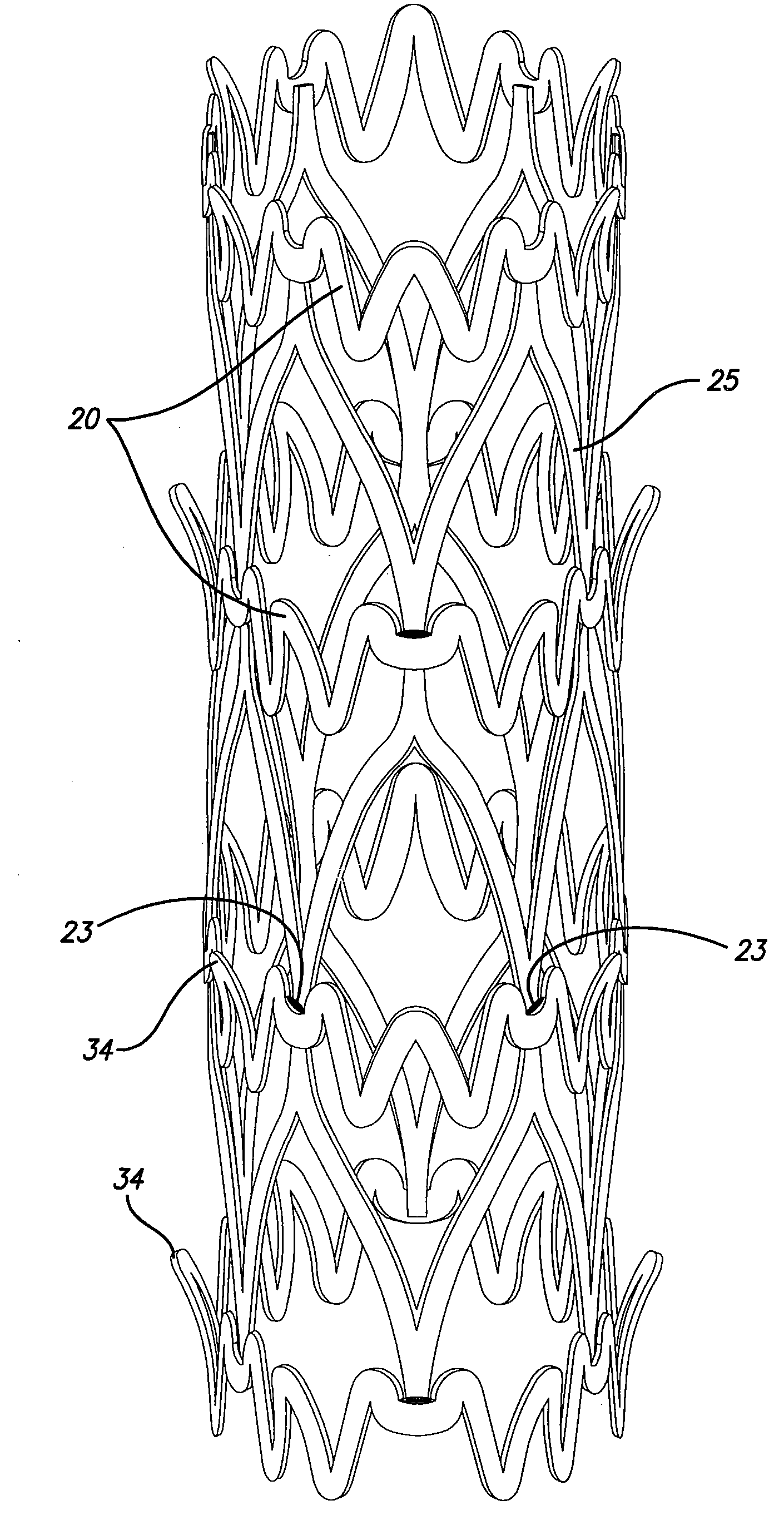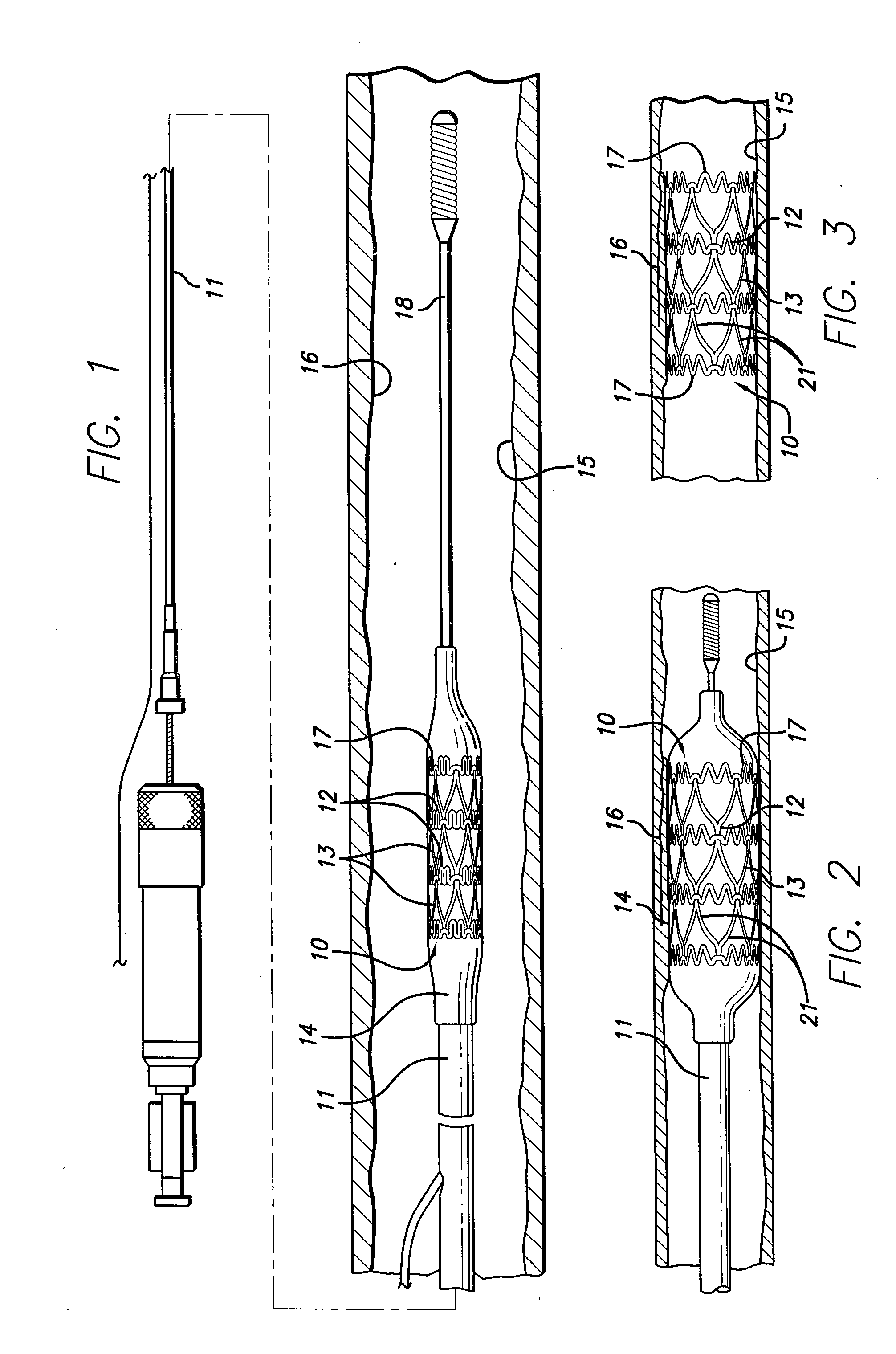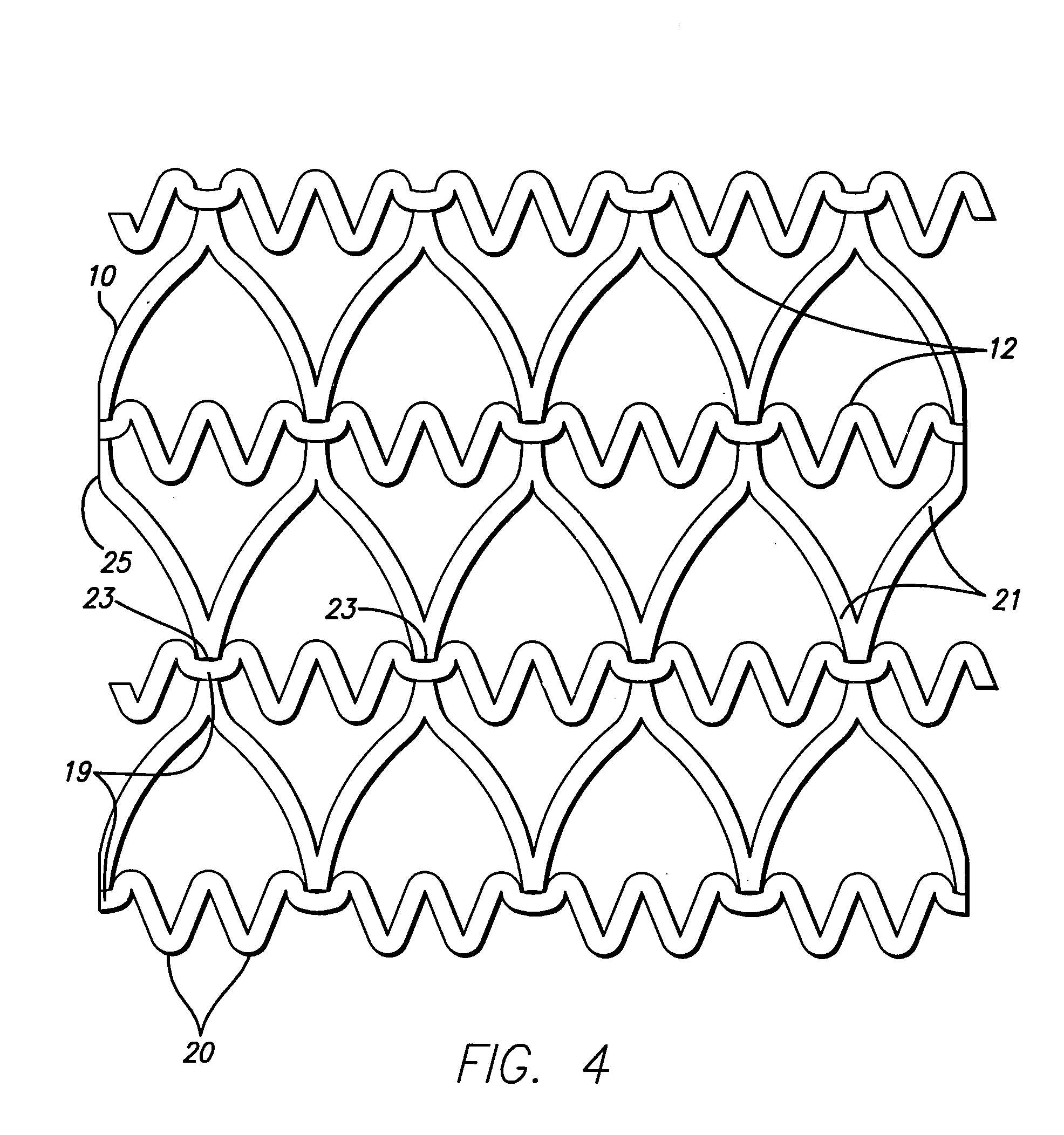Hybrid stent and method of making
a technology of endoprosthesis and hybrid stent, which is applied in the field of endoprosthesis devices, can solve the problems of chromium oxide layer present on the surface of stainless steel stents to prevent corrosion, chromium oxide layer may have a tendency to degrade during long-term use within the body, and alloys can sometimes be excessively radiopaque or lack of sufficient strength, so as to improve visibility
- Summary
- Abstract
- Description
- Claims
- Application Information
AI Technical Summary
Benefits of technology
Problems solved by technology
Method used
Image
Examples
Embodiment Construction
[0047]The hybrid stent of the present invention combines the features and advantages of metallic stents with those of polymeric stents so that the combined hybrid stent provides the required structural support for a vessel such as a coronary artery, yet is visible under any of MRI, computer tomography or x-ray fluoroscopy. In general, metallic rings are aligned along a stent longitudinal axis and an outer layer of a first polymeric material covers the outer surface of the metallic rings, and an inner layer of a second polymeric material covers the inner surface of the metallic rings. At least one link connects adjacent metallic rings whereby the links are formed by the inner and outer polymeric materials. Virtually any stent pattern, of the many known stent patterns, can be used to form the hybrid stent of the present invention. Thus, while certain embodiments of the hybrid stent are described herein, they are for exemplary purposes only, and are not meant to be limiting.
[0048]Turni...
PUM
| Property | Measurement | Unit |
|---|---|---|
| Thickness | aaaaa | aaaaa |
| Thickness | aaaaa | aaaaa |
| Thickness | aaaaa | aaaaa |
Abstract
Description
Claims
Application Information
 Login to View More
Login to View More - R&D
- Intellectual Property
- Life Sciences
- Materials
- Tech Scout
- Unparalleled Data Quality
- Higher Quality Content
- 60% Fewer Hallucinations
Browse by: Latest US Patents, China's latest patents, Technical Efficacy Thesaurus, Application Domain, Technology Topic, Popular Technical Reports.
© 2025 PatSnap. All rights reserved.Legal|Privacy policy|Modern Slavery Act Transparency Statement|Sitemap|About US| Contact US: help@patsnap.com



